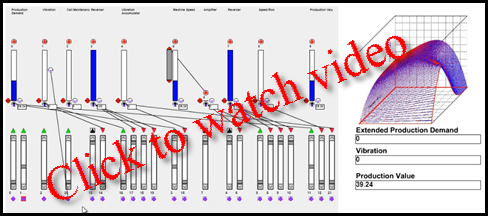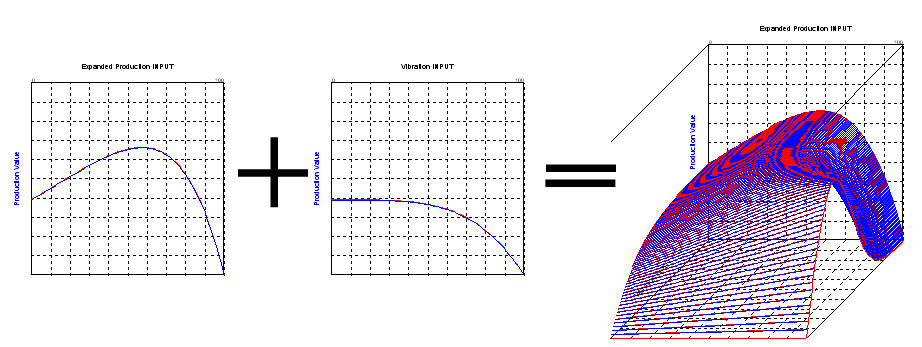
This is a slightly more complex formula than the one shown in the "Simple Formula" demonstration. In this case, a non-linear formula is described with the KEEL "dynamic graphical language".
KEEL Technology provides a way to create, test, package, audit, and explain human-like reasoning. The KEEL "dynamic graphical language" provides an "easy to use" approach for creating what might otherwise be a very complex formula. This demonstration shows how the KEEL language implements a simple non-linear formula. In this case there are 2 linear inputs used to create curves that are integrated to produce 1 output. An automatically generated KEEL cognitive function (KEEL Engine) processes the functionality behind the scenes. In more complex problem domains, there are no software limits to the number of inputs , the number of outputs, or the number and type of functional relationships between information items that are simultaneously processed (as if it was a single formula).
In the KEEL "dynamic graphical language" (shown in the screen shot at the left side of the demonstration below), the vertical bars at the top represent outputs that can either be exposed to the external environment or can be used internally. Outputs represent relative (analog) decisions or actions. The height of the output bars is an indication of the importance of this piece of information (decision or action).
The vertical scroll bars, grouped below the outputs represent inputs. The indicators above the scrollbars (red and green) indicate whether they hinder or drive the output they are associated with.
The wires shown in the window define specific functional relationships that describe how information is related. In the development environment, these wires are created with simple drag and drop mouse actions. As soon as inputs and outputs are dropped on the screen and as the links are made, the system reacts to the simulated inputs (the scroll bars). In this way the designer can see immediately how changes in the inputs propagate through the system. Unstable designs are caught by the design environment.
Using the KEEL Toolkit, the designer uses the KEEL language to define formulas for the two curves below and then integrates them together to create the complete integrated formula. The KEEL "engine" is the embodiment of the complete formula. When it used in the production system, it is called with two input values and the result will be a vertical point on the surface. Using the rendering of the formula above, the user can manipulate inputs 0 and 2 to signify input values for the "Expanded Production INPUT" and the "Vibration INPUT" and observe the "Production Value" output.

|
Copyright , Compsim LLC, All rights reserved |